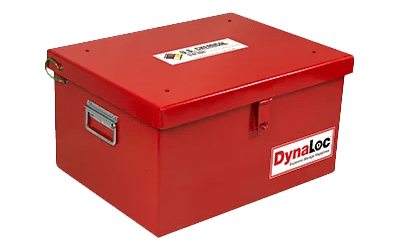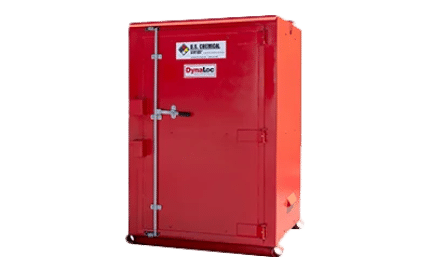DynaLoc® Type 2
Indoor Magazines & Cap Boxes
U.S. Chemical Storage engineers durable Type 2 indoor magazine storage for storing high explosives (up to 50 lbs.) inside your facility. The portable steel construction-lined hardwood storage magazines keeps your explosive components or ammunition secure and safe.


Durable Type 2 indoor magazine storage for your high explosives.
U. S. Chemical Storage’s DynaLoc® Type 2 Magazines are for storage of high explosives inside of buildings.
Engineered to meet stringent ATF compliance standards, our outdoor storage solutions ensure the secure and reliable containment of explosive materials, keeping them protected from both environmental elements and unauthorized access.
Features & Benefits
- Sized Right - fit through standard doorways to move in easilty or move out during a dangerous event. Custom sizes are available.
- Lift D-Rings - for moving via overhead crane or forklift strap
- Two (2) swivel wheels and 2 straight wheels for easy mobility*
- Secure Latch Closure - utilizing strong camlock style mechanism
- Theft-resistant Double Padlock - with welded steel hood (only one for cap boxes)
- Bullet-Resistant Durability - protects against catastrophic events (not bullet PROOF)
- Robust Design Details - like door overhangs, vent hoods, hand-finished woodworking & welds
- Strong, Hand-Welded 12-Gauge U.S. Steel Exterior
- Non-sparking 1/2" Plywood Interior
- Long Lasting 2-coat painted Finish static grounding system, and vents to manage humidity
- Grounding system for safety from electrical shock
- On larger sizes, secure air manage humidity
- Variety of Models - choose from 3 standard models of rolling magazines and 3 standard sizes of cap boxes
- Capboxes do not have wheels; 2-man lift with flat bar handles. EL 471 model has 2 locking swivel and 2 straight wheels.
Common Applications
Failure to comply with ATF standards can result in severe penalties and safety risks.Explosives are utilized in various industries, including mining, law enforcement, entertainment, and fireworks displays. Because of their inherent dangers, handling and storing these materials requires strict compliance with federal safety standards.
- Law Enforcement- Explosive, ammunition, and contraband
- Municipalities - Fireworks and gunpowder re-enactment supplies
- Contractors - Blasting supplies
- Park & Wildlife Services - Avalanche management
- Military - Ammunition & other weaponry risks
Downloadable Information & Fact Sheets
Compliance & Approvals
U.S. Chemical Storage builds and delivers customized, high-quality, and fully compliant solutions for explosive storage that prioritize safety and operational efficiency.
Contact us today to design a custom solution for your specific needs.
All DynaLoc® Type 4 magazines meet or exceed the following regulations:
- ATF 27 CFR, Part 555.208
27 CFR, Part 555 Subpart K
29 CFR, Part 1910 Subpart H
49 CFR, Subtitle B, Chapter 1 18 USC, Part 842
- NFPA 70
- DoD regulation compliant (when specified to order)
Frequently Asked Questions
Each class requires a unique storage solution to ensure optimal safety and management. Type 2 is for storage of high explosives, Type 4 is for storage of low explosives, and Type 3 are day boxes that are used to transport both high and low explosives.
Our Type 2 and Type 4 explosive storage magazines are available in both indoor and outdoor styles, and every storage type we offer features theft-resistant, weather-resistant, and fire-resistant construction.
For storage purposes, federal requirements classify explosive materials according to their velocity. There are three classes of explosive materials, per ATF 27 CFR 555.202:
- High Explosives – explosives which detonate by means of a blasting cap (dynamite, emulsions, flash powders, etc.)
- Low explosives – explosives which deflagrate when confined (black powder, safety fuses, ignitor cords, “display fireworks,” etc.)
- Blasting agents – explosives consisting of fuel and oxidizer, intended for blasting and unable to detonated by a No. 8 test blasting cap when unconfined (ammonium nitrate-fuel oil and certain water-gels)
For more information, visit https://www.atf.gov/explosives/explosive-storage-requirements.
Absolutely. Like all our safe storage buildings, U.S. Chemical Storage can provide custom explosive storage magazines to fit your needs. A common addition is to mount a capbox on the outside of a type 2 indoor mag for convenience and safety.
For assistance creating a custom solution for your storage needs, contact one of our experts.
No. A common misconception is explosive storage magazines will contain a blast inside the unit—this is not the case. Explosive storage magazines work as a safeguard against theft and accidental detonation by improper storage and the environment.
Yes, if the unit is placed outside. High and low explosives that are placed in outdoor magazines should have a grounding system according to the NFPA 70 standard. Grounding protects your magazine and its contents against lightning strike, and it will need to be properly grounded by a licensed electrician. For more information, please refer to NFPA .
Blasting caps, detonating primers, and primed cartridges should not be stored in the same magazine as other explosives. That is why cap boxes are vital. They are portable like a type 3 daybox, (2 man lift) and do not have wheels. Our DynaLoc™ cap boxes are constructed to be fire-resistant, weather-resistant, and theft-resistant.
Request a Quote
How To Measure and Order Your Magazine

- Interior dimensions below are given as LxWxH.
- Measurements are from wall to wall, and may not account for 1/4 round in corners, or bracing pieces in larger pieces. Make sure your explosive material has plenty of room.
- If you require interior shelving or ATF approved padlocks, please state so at time of quote.
- Cap boxes feature flat handles welded for 2-man lift.
- Cap boxes can be engineered and welded to the side of any model as a custom order.
Click ‘Request Quote’ on any product below to speak with our expert sales team.
Please provide your shipping zip code for an accurate freight calculation.

Type 2 Indoor | EL 451
Dimensions (Exterior): 36 x 24 x 36 in
Dimensions (Interior): 34.8 x 22.8 x 34.8in
Approximate Weight: 340 lbs.

Type 2 Indoor | EL 461
Dimensions (Exterior): 48 x 24 x 48in
Dimensions (Interior): 46.8 x 22.8 x 46.8 in
Approximate Weight: 489 lbs.

Type 2 Indoor | EL 471
Dimensions (Exterior): 60 x 28 x 72 in
Dimensions (Interior): 58.8 x 26.8 x 70.8 in
Approximate Weight: 806 lbs.

Type 2 Cap Box | EL 481
Dimensions (Exterior): 18 x 18 x 18 in
Dimensions (Interior): 16.8 x 16.8 x 16.8 in
Approximate Weight: 97 lbs.
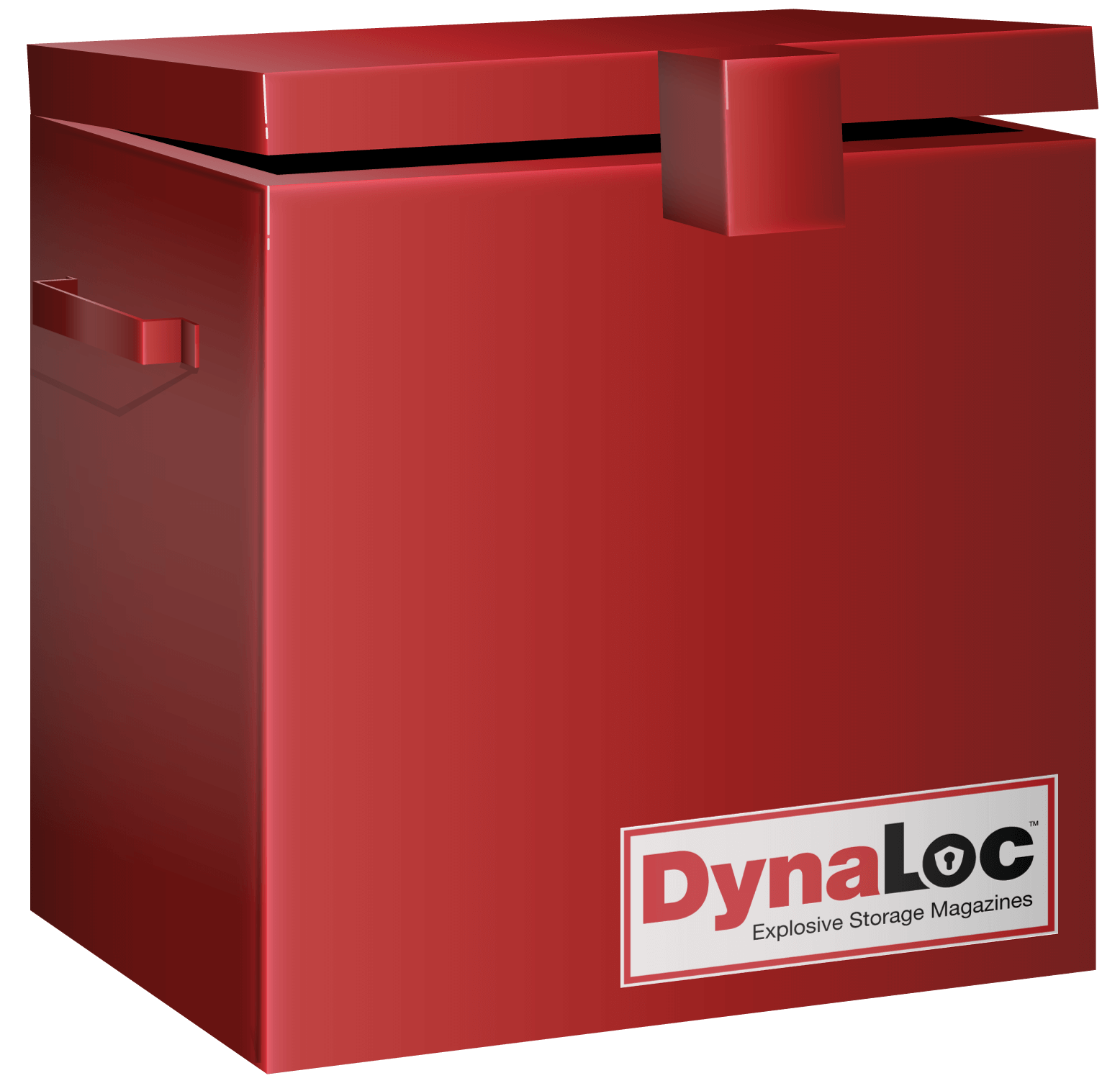
Type 2 Cap Box | EL 486
Dimensions (Exterior): 24 x 24 x 24 in
Dimensions (Interior): 22.8 x 22.8 x 22.8 in
Approximate Weight: 171 lbs.
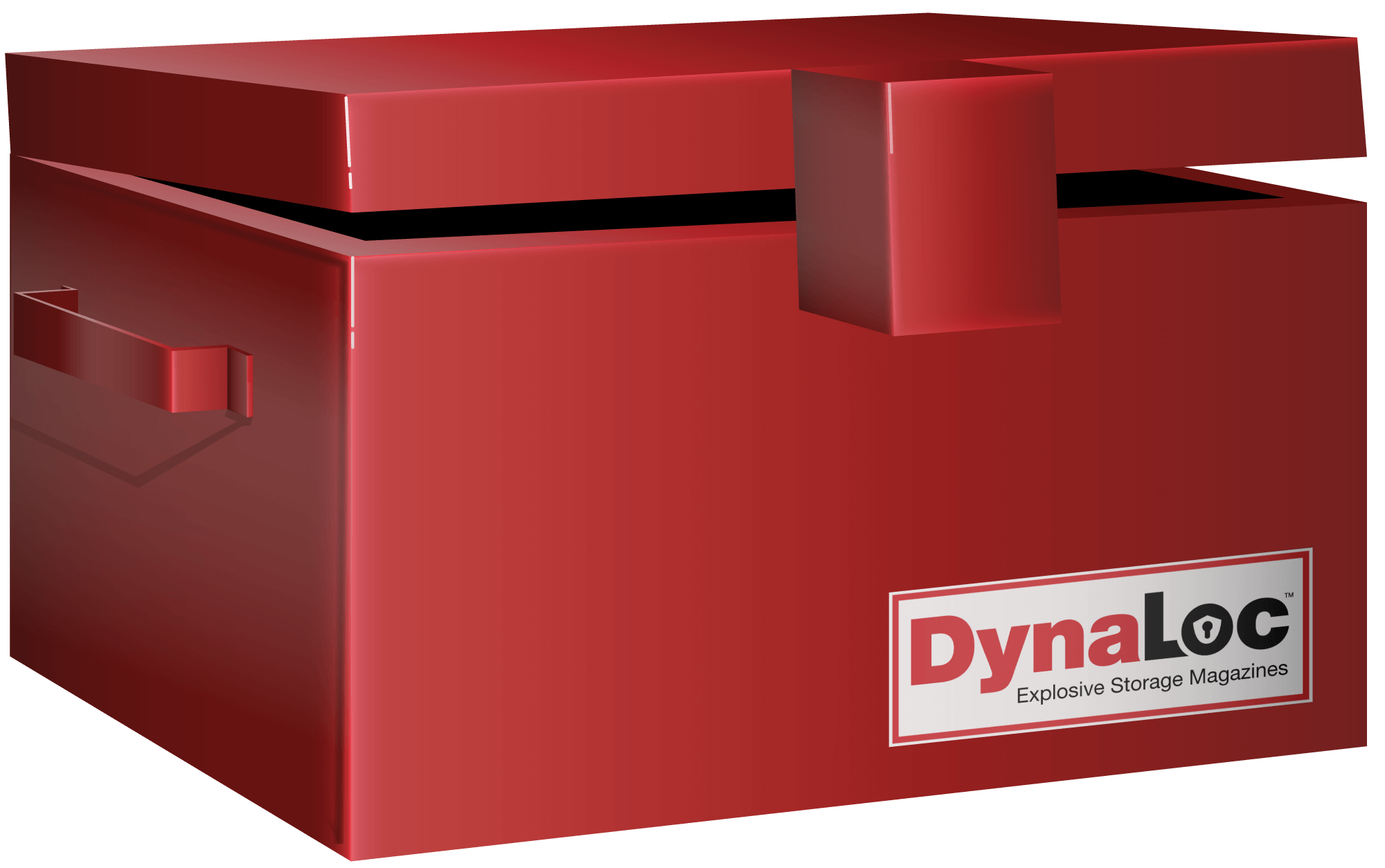
Type 2 Cap Box | EL 489
Dimensions (Exterior): 30 x 24 x 18 in
Dimensions (Interior): 22.8 x 22.8 x162.8 in
Approximate Weight: 168lbs.
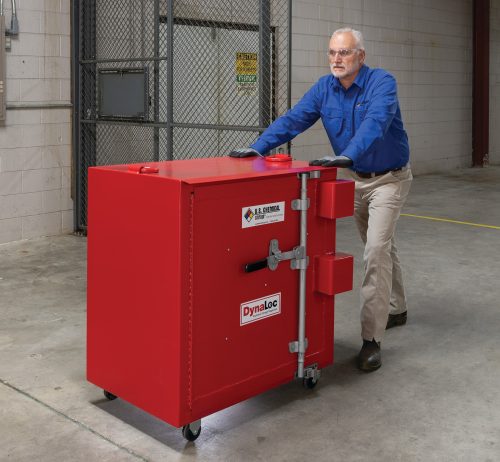
Explosive Storage Magazine Types
Explosives are used in a variety of industries, from mining and law enforcement to entertainment and fireworks displays. Due to their inherent dangers, handling and storing these materials require strict adherence to federal safety standards.
- Type 1 – Permanent storage for high explosives
- Type 2 – Portable storage for high explosives
- Type 3 – Temporary, attended storage of high explosives (known as “day-boxes”)
- Type 4 – Storage for low explosives, suitable for indoor or outdoor use
- Type 5 – Storage for blasting agents
Each magazine type adheres to specific ATF requirements for construction and security, ensuring that explosive materials are stored safely and in compliance with federal regulations.
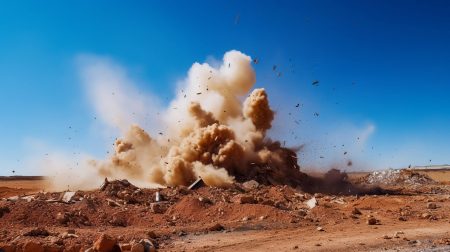
Safety Considerations for High and Low Explosives
The term “high” and “low” in referring to explosives does not indicate the danger or the intensity of the explosions they can cause. It refers mainly to the detonation velocity.
- High Explosives (e.g., RDX, PETN, TNT, C4, water gels, and emulsions) detonate by means of a blasting cap and require secure storage to avoid accidental detonation. They detonate greater than the speed of sound which creates a powerful shockwave that causes the damage, producing a “shattering” effect. However, they are considered generally more stable since they require a detonator.
- Low Explosives (e.g., black powder, flash powder, fireworks) are more sensitive to heat and flame, requiring extra caution and proper confinement to prevent accidental ignition. They deflagrate more so flame accompanies their detonation. Low explosives have slower reactions, are often used as propellants to produce a pushing effect, and must be confined in some sort of container in order to explode rather than merely burn.
OTHER DYNALOC® EXPLOSIVE MAGAZINE TYPES AVAILABLE
Request a Quote
Fill out this form to get a quote for our product.
Type 2 Outdoor | EL 229
DynaLoc® Type 2 Outdoor Magazine
For storing high explosives outside your facility. The steel construction-lined hardwood storage magazines keeps your explosive components or ammunition secure and safe from theft and weather events. View Product >DynaLoc® Type 3 Daybox for Explosives
Use Type 3 storage magazines, also known as “day boxes,” for the transport and temporary, supervised storage of explosives. Adhere to ATF and DOT regulations View Product >DynaLoc® Type 4 for Low Explosives
For indoor or outdoor, long-term storage of low explosives. All include forklift pockets and crane lifting lugs to easily move or relocate. Protected ventilation and double lock security hasps keep the heavy-duty cam lock handle secure. View Product >
YOUR PARTNER IN THE PROCESS. EXPERIENCE YOU CAN TRUST.
We deliver the precise building solution with the speed, security, and high quality that you demand.


